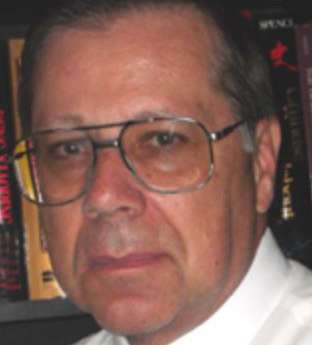
By JOHN RICHARD SCHROCK
The title of the March 3, 2022 report in the journal Science, revealed “Africa battles out-of-control polio outbreaks.” Science reporter Leslie Roberts details how cases have fallen in the last countries to harbor the polio virus, Pakistan and Afghanistan. But now African outbreaks are out of control and a “grave threat to eradication.” My earliest childhood memories are the relief my parents showed when I received my polio shots in the mid-1950s. Now we have to rethink our assumption that polio vaccines will erase polio from the earth.
This threat continues, as the CDC website states: “It takes only one traveler with polio to bring the disease into the United States. The best way to keep the United States polio-free is to maintain high immunity (protection) in the U.S. population against polio through vaccination.”
This vaccination story is complicated. The polio vaccines were developed in the United States, first the 1955 injected vaccine by Jonas Salk (1914–1995) and in 1961 the sugar cube vaccine by Albert Sabin (1906–1993). Salk’s vaccine was an inactivated or “dead” virus (although viruses by themselves are never living) that had no ability to infect cells, but did elicit solid immunity and was the first to turn the tide on polio from 1955 to 1960.
Sabin’s vaccine was a modified active polio virus that did not cause paralysis but did stimulate the immune system to produce immunity. Vaccine drops were placed on sugar cubes and taken orally. They became common after 1960. This active virus vaccine had an apparent advantage of reproducing in the intestinal tract and being shed to in turn “vaccinate” others. This would allow a vaccination campaign to be more effective since vaccinating one person could end up protecting their family and neighbors.
But there was a potential problem with the Sabin oral vaccine: variations can arise similar to what we are seeing in the covid-19 virus. On April 5, 1988, public television ran a program that interviewed both Salk and Sabin—separately, because they were enemies. “NOVA: Can You Still Get Polio?” appears to still be accessible on the WGBH site and describes the problem very well. While nearly all of the people who received the oral vaccine gained solid immunity, a few very rare individuals contracted polio.
One of those cases was a Kansas farmer who was brought into the hospital in Ottawa, Kansas. Young doctors no longer had experience with patients with polio. Fortunately, the emergency doctor on duty was old, and seeing the symptoms, said that if he didn’t know better, he would think this was polio—and he ordered the tests. Indeed, this was one of the few rare cases known as vaccine-derived polio caused by the Sabin oral vaccine.
Twelve years later, in 2000, the U.S. would return to Salk’s completely safe inactivated poliovirus vaccine (IPV). However, due to its rare cases and more extensive spread, producing immunity in the unvaccinated, Sabin’s oral poliovirus vaccine (OPV) has continued to be used overseas and has been relatively effective eradicating polio worldwide. —With the exceptions of Pakistan, Afghanistan and now Nigeria. The longstanding problem completing vaccination in Pakistan and Afghanistan, and thus eliminating polio worldwide, has been science-ignorance and the belief that it is an attempt to sterilize people. In Nigeria, it is vaccine-derived polio and there is hope a new more stable oral vaccine will work.
But now a new case of wild polio has showed up in Malawi. The journal Science reported that “On 17 February, Malawi’s Ministry of Health announced a...3-year-old girl who was paralyzed in November 2021 was infected with the wild poliovirus, which Africa officially vanquished in 2020. The sequence of the virus showed it had somehow made the leap from Pakistan, one of the last two holdouts of the wild virus. A week later came bad news from Afghanistan: Gunmen killed eight polio workers in the country’s northeast.”
Similar to the smallpox agent, polioviruses only infect humans. So the potential for eliminating this disease remains. But because just one traveler could bring polio back into the United States, the CDC recommends children get four doses of polio vaccine (at 2 months old, 4 months old, 6 through 18 months old, and 4 through 6 years old). But this disease may never be eradicated.
Afghanistan has gunmen. The United States has anti-vaxxers.
. . .
John Richard Schrock has trained biology teachers for more than 30 years in Kansas. He also has lectured at 27 universities during 20 trips to China. He holds the distinction of “Faculty Emeritus” at Emporia State University.





